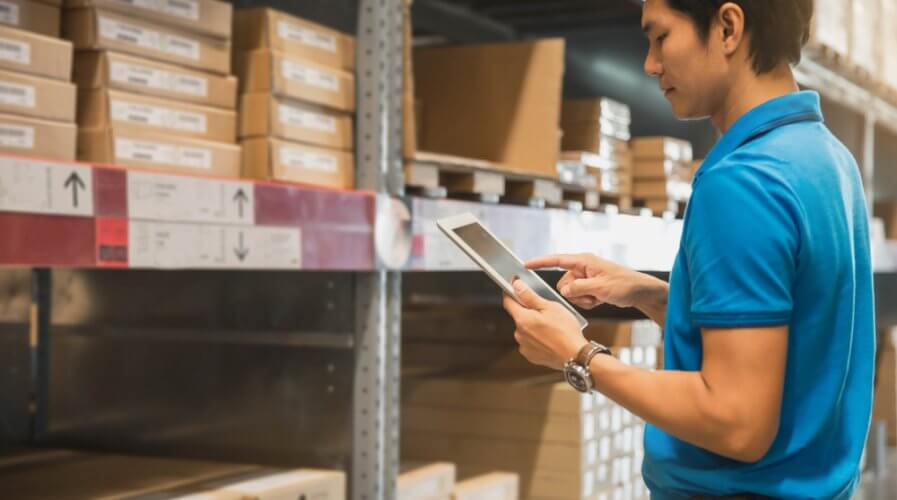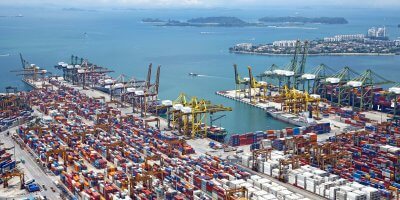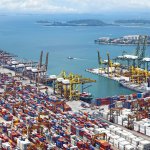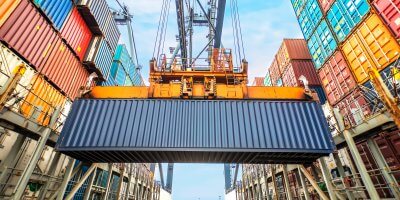
Logisitics is headed towards big changes. Source: Shutterstock
3 ways technology could help logistics companies transform
NEW technologies can transform the logistics industry completely, and they’re all ready for commercial deployment. The only thing they need is for leaders to drive the change.
Making changes in the logistics space is quite difficult, because it involves not only changing processes and practices within the business but also influencing relevant third-parties in the logistics space to adopt the same changes.
It’s why the traditional logistics industry, dominated by pens, rubber stamps, and paper forms, hasn’t changed much over the past several decades.
For a meaningful change to be driven by, say a shipping line, they’ll need corresponding changes to be made by exporters, road transport agents, the port and customs department at the home port and the destination port, and so on.
It’s one of the reasons why technology adoption has stalled in this industry, despite strong demand from customers and even regulators.
Here are three ways logistics companies could use technology in order to transform their business, without needing to influence too many businesses around them in order to fully implement it and benefit from it:
# 1 | Leverage the power of sensors
Today, sensors can help organizations do exciting things. In the logistics space, it can give companies a strong competitive advantage in the marketplace.
Embedding sensors on cargo palettes, shipping containers, and on trucks and railway carriages among other things not only help companies track their products in real time, but also file claims with insurers faster and with more accuracy if something goes missing.
Using sensors also significantly boost the company’s image and make it more accountable in the eyes of the customer, directly impacting their top line.
All in all, sensors can help logistics companies to provide better support and updates to customers and making smarter, more informed business decisions for themselves.
# 2 | Create a digital twin
When logistics companies embed sensors throughout their business, it puts them in a position to create a digital twin that helps them optimize their operations.
A digital twin is essentially a digital replica of their business operations. Sensors track everything that a company’s operations team does, relaying back the data to create opportunities to improve and tighten processes.
In essence, the digital twin is one of the most accurate ways for logistics companies to make significant cost savings.
Building a digital twin also helps logistics companies create incredible value for their customers, giving them insights into the movement of their goods that they would otherwise never have.
The data from digital twins can help exporters and e-commerce companies lower inventory cost, manage customer’s expectations when it comes to delivery schedules, and proactively manage their demand and supply pressures.
# 3 | Use big data to your advantage
When logistics companies have sensors embedded throughout their operations, they collect a lot of data.
That data can be used to help the company gain insights into the efficiencies they create for themselves and better understand the wastages, delays, lags, and challenges that hamper their business.
Using all the data, logistics companies can easily create artificial intelligence (AI) and machine learning models that help the company in new and interesting ways.
It can, for example, help further optimize processes internally and create predictive maintenance solutions that reduce downtime of logistical assets.
AI models can also help with demand planning to ensure pricing offered is most competitive while also maximizing profits.
At the end of the day, using sensors, and taking a plunge into the digital world can significantly help logistics companies, whether or not they’re able to influence their peers and partners in the industry.
READ MORE
- Strategies for Democratizing GenAI
- The criticality of endpoint management in cybersecurity and operations
- Ethical AI: The renewed importance of safeguarding data and customer privacy in Generative AI applications
- How Japan balances AI-driven opportunities with cybersecurity needs
- Deploying SASE: Benchmarking your approach






